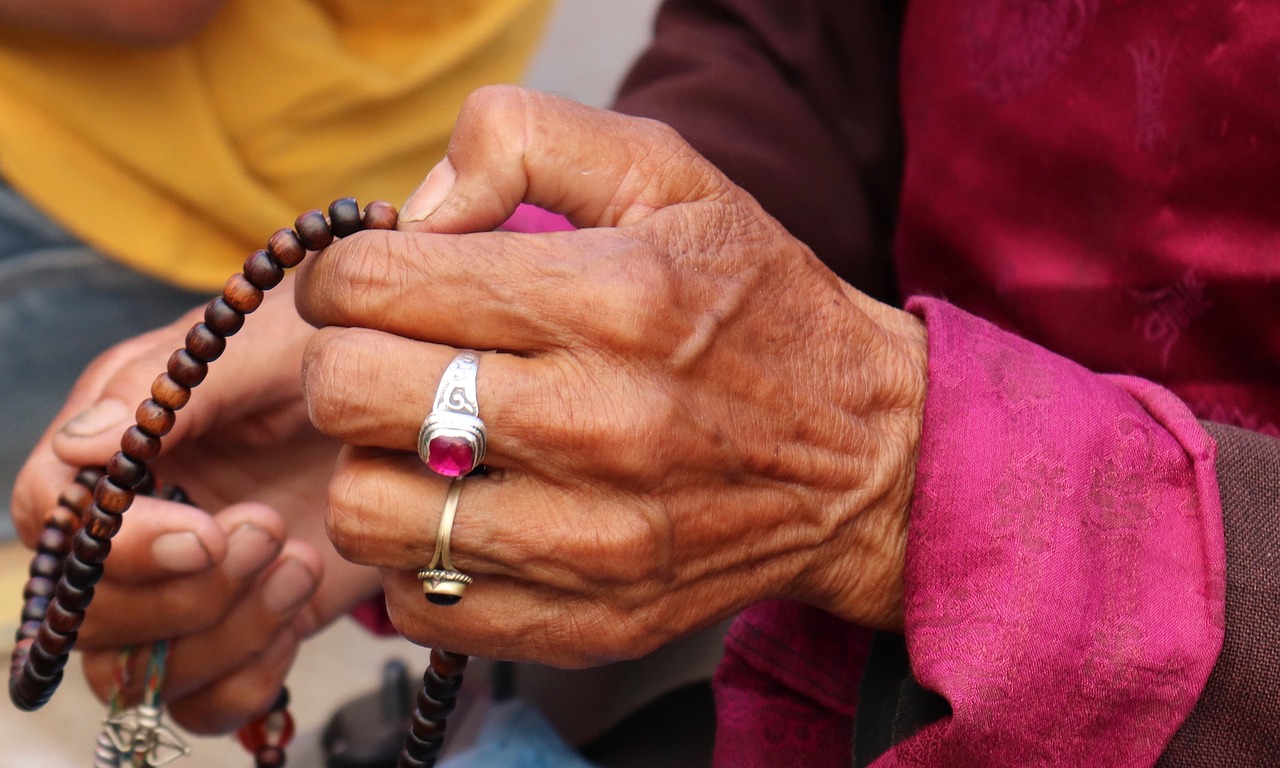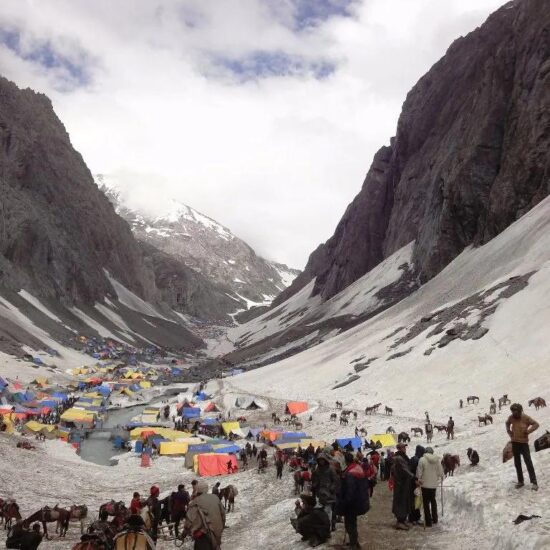
Diving into the Rich Cultural Tapestry of Ladakh: Festivals and Traditions
When we think of Ladakh, we think of vast icy plains and mountainous regions, its many majestic natural features, and its culturally rich traditions such as its festivals. Festivals of Hemis, Losar, and Galdan Namchot, among others, are all part of the culture of the Ladakhi people and their culture. In the following article, we’ll dive deep into the festivals and traditions that Ladakh has to offer that attract millions of people all around the world throughout the various festive seasons, and their significance.
Hemis Festival: Unveiling the Mystical Mask Dance
The then-king Senge Nampar Gyalva founded the Hemis monastery in AD 1672. The Hemis monastery is accessible by road from Leh, which is around forty kilometers away.
The Hemis monastery may trace its intellectual origins back to the ancient Tantric Buddhist tradition. Hemis Festival is observed on the tenth day of the fifth month in the Tibetan calendar, which corresponds to June or July in the Gregorian calendar.
The major yearly celebrations in Ladakh’s villages take place in the winter, whereas Thseshu is celebrated in Hemis in the summer.
The captivating Cham Dance, which is performed by the residing monks of Hemis monastery to the deafening rhythms of drummers, cymbals, and various other Tibetan musical instruments, is the festival’s main attraction.
Losar: Ladakh’s Joyous New Year Celebration
Losar marks the new year of the Buddhist community in Ladakh. A large-scale event with traditional dances, music, and special foods. Losar Takes Place for about 3 days, in January or February depending on the Tibetan Calendar. It is an important part of the rich Cultural Tapestry of Ladakh.
The region of Ladakh as together celebrates this event, people get together to observe and partake in the celebration and tourists flock in crowds to take part in it as well mainly because of its unique folk dances and musical acts. Special meals are served followed by evening festivities during this time of the new year. It is also considered the Best Time to Visit Leh Ladakh by tourists.
Galdan Namchot: Celebrating the Enlightenment of Tsongkhapa
The Galdan Namchot honors both the passing and the birthday of Je Tsongkhapa. It pays homage to his heritage. Je Tsongkhapa was a well-known Tibetan Buddhist scholar and teacher.
The dates of the yearly Galdan Namchot Festival are subject to change, although it always takes place in December.
During this period, specialty preparations include the notorious Thukpa, tea, and momos. People go to their family members and have meals. Individuals give each other traditional ceremonial scarves called khataks.
Monks engage in a variety of traditional dances while dressing in vibrant apparel. During Galdan Namchot, dwellings, public buildings, and monasteries are illuminated. To symbolize the triumph of light over darkness, people prepare and light butter lamps.
Both domestic and foreign visitors refer to the Galdan Namchot as the Festival of Light in Ladakh. Numerous other neighboring regions, including Tibet, Nepal, and Mongolia, also commemorate it.
The event not only honors Je Tsongkhapa but also ushers in Pre-Losar or the new year.
Traditional Ladakhi Wedding Customs: A Union of Cultures
Having a wedding in Ladakh the traditional way is beautified further not only with its colorful traditions but also the lakes and mountains it surrounds.
In Ladakh and among Ladakhi people, the boy’s parents often arrange weddings when he is around twenty years old. The girl’s parents, who are typically two to three years younger than the boy’s, are visited by the boy’s parents to get their consent to the match.
Lama consultation is required to determine an auspicious date if it is approved. The celebration of the marriage typically lasts all night, starting in the late evening with the arrival of the village families, who all bring food for the wedding feast.
It is customary for the groom to dance and drink change during the whole nightlong celebration, but the bride is supposed to stay seated, frequently in the kitchen.
When someone gets married for the second time (because of a death in the family or a divorce), or when the couple is impoverished, a particular kind of marriage known as Skus- te-Khyong-ches, or “to bring by theft,” is performed.
Over the ages, marriage rituals have evolved, and Ladakh has been a part of these cultural shifts. In addition to the customary marriages observed by the Ladakhi people, families now typically incur high wedding expenses and add lavish presents and decorations to their weddings, something that was not formerly the case.
Ladakhi Dance Forms: Expressions of Culture and Spirituality
Ladakh is rich with its many dance forms, its people express themselves through these dances signifying culture. Each dance form is unique to one another in its dance form as well as the colorful clothes, and different festivals by which it is accompanied.
It is undoubtedly one of the most cultural rice places in the world and its heritage along with its legacy has deep routes and contributions through different tribes including Mons and Tibetans.
These dance forms namely are Kathok Chenmo, Kompa Tsum-Tsag, Spao Dance, Koshan Dance, Jabro, Mentok Stanmo, Shondol Dance, Takshon Dance, Loshon Dance, Cha-rtses Dance, Nyopa Dance, Brokpa Dance, Chabskyan Dance, Alley Yato, Balti Dance, among others.
The various instruments used for these dance forms range from Drumyan & Piwang a kind of lute, Lingbu a kind of flute, Daman or drums, Harmonica, Surna or Oboe, among others.
Many famous local and world-renowned singers and instrumentalists also perform exclusively during these festivals.
The following are a few of the ten well-known dances; each has its special history and meaning.
Kathok Chenmo Dancing
A dance form for the nobles that honors the splendor and dynasty of Ladakh is called Kathok Chenmo.
In the past, the monarchs frequently hired the Kathok Chenmo dancers as their entertainers after carefully selecting them.
Dance Spao
In the language of Ladakh, spao signifies warrior. Ladakh’s renowned mythology, which includes the legendary Ling Gyalam Kesar, is linked to this warrior dance. In the past, it was done during the winter, when visitors had plenty of free time to engage in such leisure.
Jabor Dance
Only the nomads of the Changthang area, which is east of Ladakh, consume jabro.
Men and women join together in two strings to dance to the sound of the traditional lute, or drum-nyan. It has been greatly influenced by Tibetan culture.
Koshan Dance
Horse sports are part of Ladakh’s history. It may be found in several locations around the region, each having distinctive features of its own.
However, horse racing is the primary action that is a necessary part of the horse race. They do the Koshan Dance. The artists’ gorgeous costumes are adorned with a multitude of gemstones and vivid brocade fabric.
Kompa Tsum-Tsag
How the performers tap their feet gives rise to the dance’s name. Translated, “three steps” is what Kompa Tsum-Tsag signifies.
Dancers of both sexes perform this slow, numbered dancing style with tremendous joy and fervor, making it one of the slowest dance genres.
Mentok Stanmo Dancing
Mentok Stanmo is a dance that is done in Dha-Hanu to commemorate the blooming flowers in the valley.
Many visitors and residents scatter in the enjoyment of the flower festival as it follows.
Dancing Shondol
In the past, Ladakh’s monarchy is responsible for the existence of Shondol Dance.
It was written and performed expressly to placate the monarch and his entourage. It is renowned for the elegant motions and flexible stride of its youthful, appealing performers.
Shon Dancing
Takshon, also known as Shon, used to be a dance reserved for the Ladakh royal family.
On the eve of the New Year, the ladies from aristocratic households would perform it in the king’s honor. Shon is accessible to everyone now for practice and enjoyment.
Lashon Dancing
Harvest dances called lotion are particularly popular in Shey village, which served as Ladakh’s capital in the past. To celebrate the conclusion of the harvest season, the villagers get together.
Balti Dance
The Muslim populations of Kargil as well as Turtuk perform the Balti Dance. It is distinctive since it has its costumes, music, and songs in the Balti language. It is carried out at festive events, such as ceremonies or festivals.
Various Other Dances
Nyopa Dance, Brokpa Dance, Chabskyan Dance, Alley Yato are some of the other dances that Ladakh and its people observe during various festivities. Its significance is deep-rooted with history, mark the rich Cultural Tapestry of Ladakh differentiating itself through various tribes and regions, to come together and form Ladakh as one traditionally and culturally rich region full of traditional dance, music, and other activities that are enjoyed locally as well as by local tourists and tourists from over the world.
Conclusion
Nishnai Holidays offers customizable Leh ladakh tour package from Mumbai to experience the diversity and grandeur of Ladakh without the hassle of meticulous planning.
With its culturally abundant traditions and festivities, Ladakh is more than its beautiful mountains, lakes, and natural beauty, Ladakh is made up of its people, who uphold the region with their colors, whether it is the harsh winters and white muted colors of its ice, or the lush flowery summers. The Ladakhi people make sure that the land (and the skies) are always colorful and well-lit for the world to witness.



